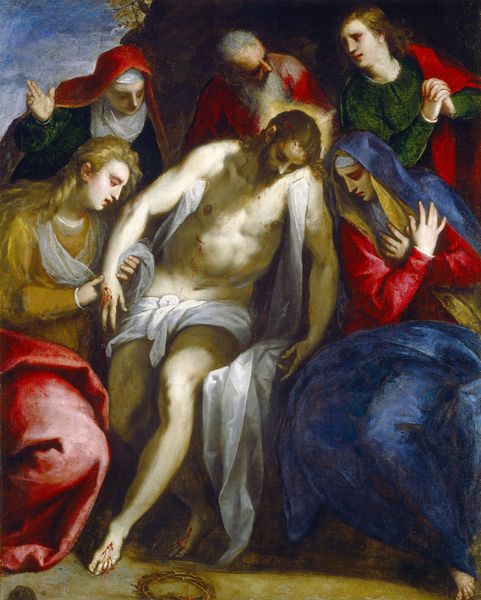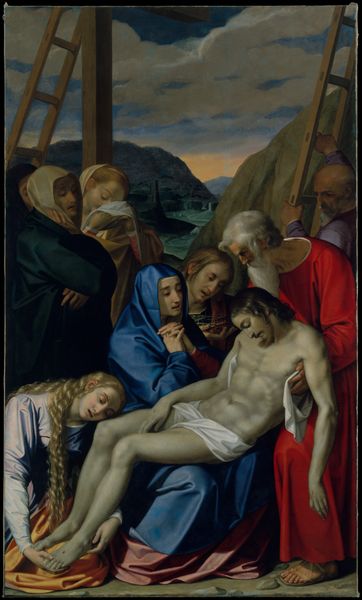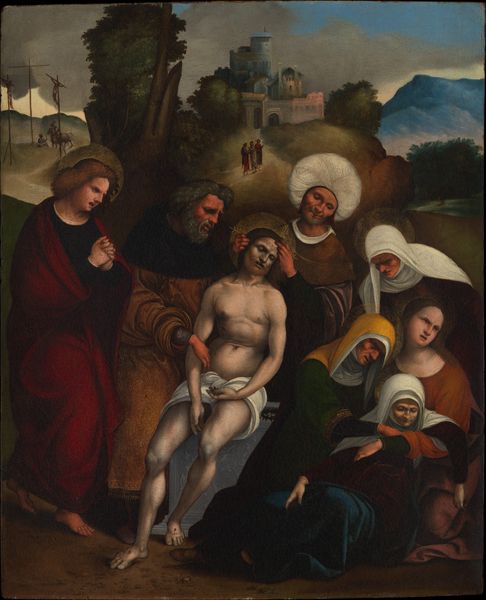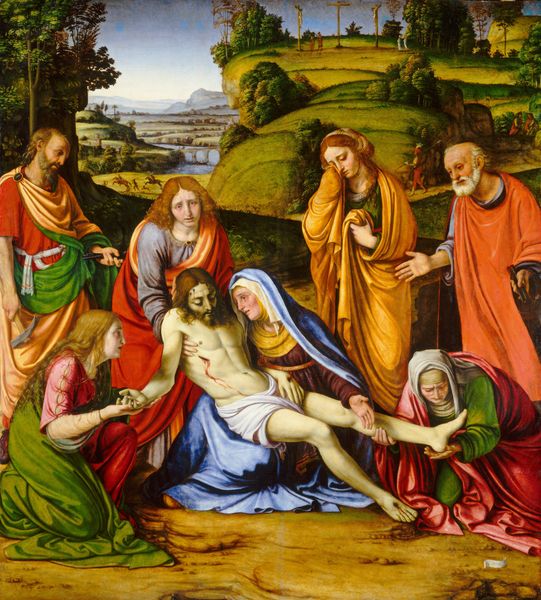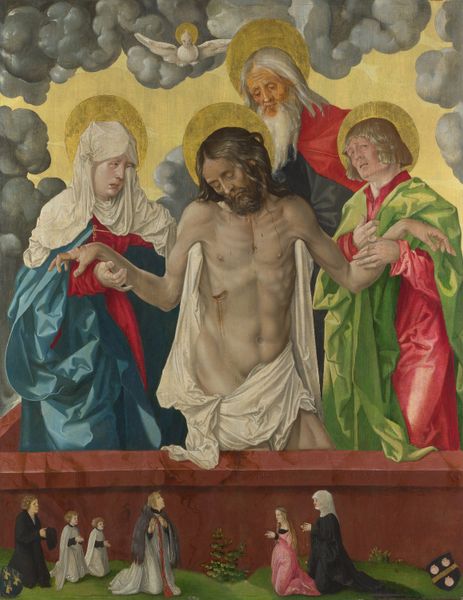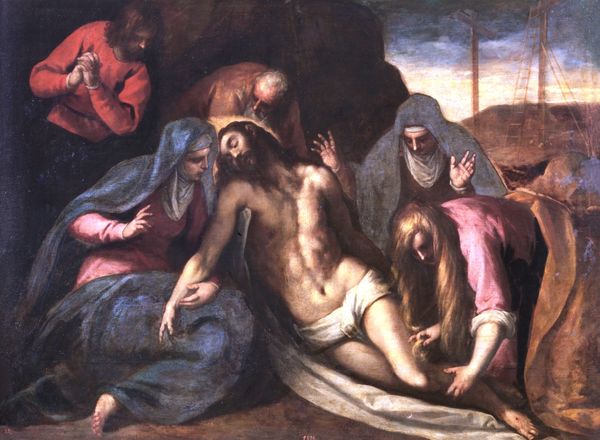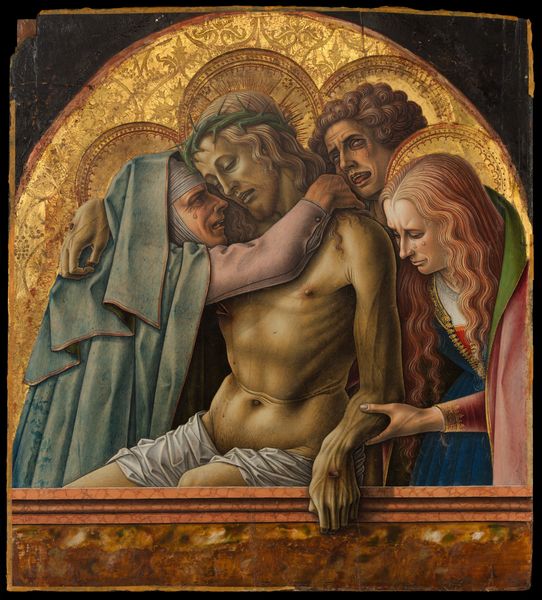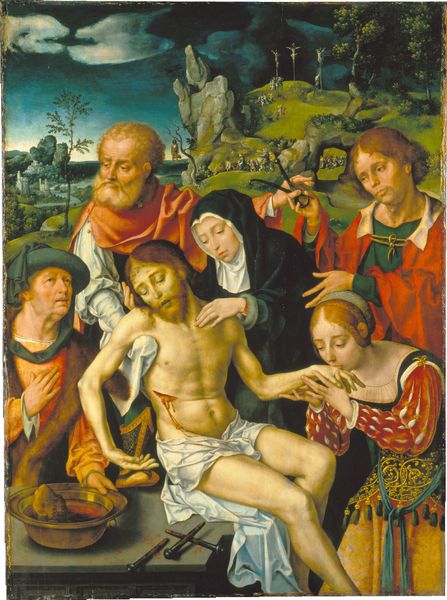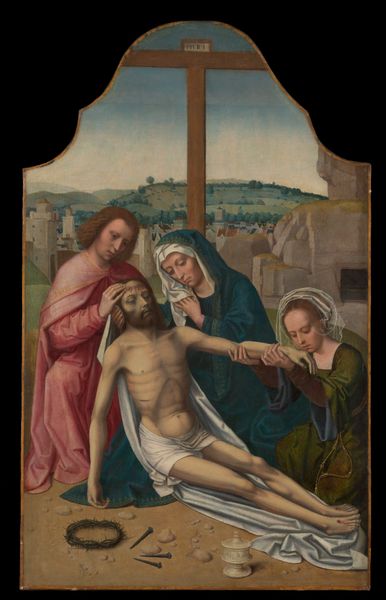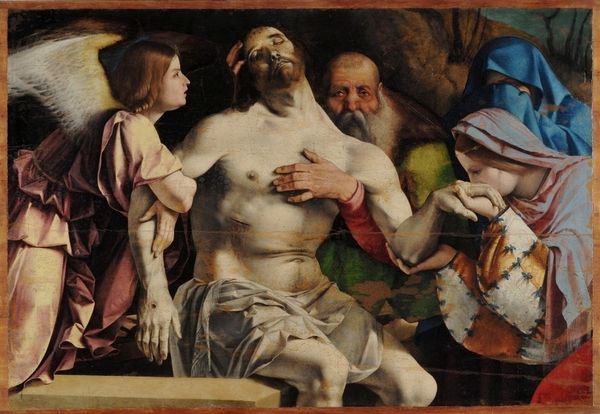
drawing, tempera, ink
#
drawing
#
allegory
#
tempera
#
figuration
#
11_renaissance
#
ink
#
history-painting
#
italian-renaissance
Dimensions: overall: 21.6 x 14.5 cm (8 1/2 x 5 11/16 in.)
Copyright: National Gallery of Art: CC0 1.0
Curator: Giulio Clovio, around 1550, rendered "The Lamentation" using tempera, ink, and drawing techniques, all coming together to illustrate a moment heavy with grief and religious significance. Editor: The sheer pallor strikes me first – this chalky whiteness on Christ’s body as contrasted with the vivid colors on those attending to him, a clear message of absolute loss. It's startling and somber. Curator: The work, from the Italian Renaissance, presents a figuration steeped in historical context; lamentation scenes were commonly commissioned for devotional purposes and reflect the political anxieties of that era, focusing on suffering and mourning through the lens of the religious and the societal impact of this one man's plight. Editor: Look closely, though. Beyond the politics and devotion, note how Clovio employs his materials. The application of tempera mixed with ink provides incredible depth to the folds of fabric—these are tangible garments, evidence of craftsmanship—which anchors the emotional weight of the scene. Curator: Exactly. It begs us to question not just the spiritual message, but also the complex network of social hierarchies implicated in the artistic process: patronage, artistic labor, the consumption of images like this. And the Virgin Mary, draped in blue, symbolizes both grief and strength—the matriarch standing at the heart of loss but representing continued faith. The socio-religious patriarchy shows that the women often stood for a symbol instead of having actual power. Editor: Right, and consider how such pigments were produced, traded. Each shade of dye has a story—its cost, origin, and the sheer labor required to create them contribute layers of meaning beneath the surface narrative. The medium here communicates wealth and investment of devotion. Curator: Viewing the lament from this angle enriches our grasp of art as both cultural production and social practice. By exploring historical conditions and materials together, a deeper interpretation arises around themes such as pain, endurance, and faith as well the structures that enable representation. Editor: Examining process and purpose has enriched my encounter here – shifting "The Lamentation" beyond static symbol towards an artefact actively weaving economics and emotion together on a substrate. Thank you. Curator: And thank you. It serves as a reminder of art's profound role in echoing culture's questions on humanity—particularly through identity, agency, gender, race, and our collective story.
Comments
No comments
Be the first to comment and join the conversation on the ultimate creative platform.
